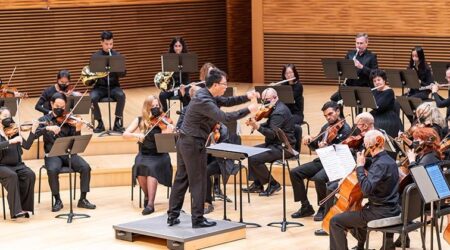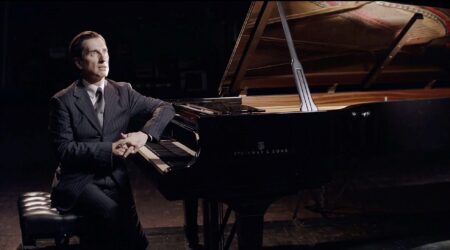In the Moment: Japanese Art from the Larry Ellison Collection
Bravo to the Asian Art Museum and the organizers of the 2013 America’s Cup Challenge Series for enriching our cultural and adventurous life in the Bay Area. The perfect synchronization between the two salutes Larry Ellison, Oracle Corporation CEO and the owner of Oracle Team USA, defender of the 2013 America’s Cup. In conjunction with […]
Bravo to the Asian Art Museum and the organizers of the 2013 America’s Cup Challenge Series for enriching our cultural and adventurous life in the Bay Area. The perfect synchronization between the two salutes Larry Ellison, Oracle Corporation CEO and the owner of Oracle Team USA, defender of the 2013 America’s Cup.
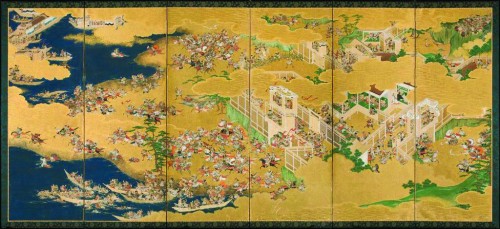
In conjunction with the race challenge, with its thrills of victory and the agony of defeat on the San Francisco Bay, the Asian Art Museum is presenting In the Moment, an extraordinary exhibition of Japanese art from the seldom seen collection of Larry Ellison, now through September 22, 2013.
With more than 60 exceptional artworks representing the span of over 1,000 years, In the Moment offers the public a first-time view of this private collection, as well as an opportunity to explore the beauty and the history of Japan in the authentic Japanese setting via the visual tour of this spellbinding exhibit.
Beautifully and expertly presented by the museum’s curators and its designers, the exhibition showcases works of well-known artists of the Momoyama (1573–1615) and Edo (1615–1868) periods, in addition to priceless and unique artifacts of religious art, lacquer boxes, armor, and metalwork. The history tells that after the wars had subsided and there was no need for the manufacturing of military armory, the artists decided to work with the leftover supplies of metal in creating objects of art, such as vases and sculptures.
The collection is amazing in its variety and it is virtually impossible for me to select just one or two favorite art objects among some of the outstanding pieces, which include a very rare 13th century wooden sculpture of Prince Shotoku at age two, typical of the Kamakura creative period, or the 9th century old wooden sculpture of the Seated Shinto Deity, as the embodiment of native Japanese gods.
I was truly intrigued and spent quite a bit of time studying The Battles of Ichinotani and Yashima from The Tale of the Heike, Edo period (1615–1868), by Kano Jinnojo (active early 1600s) in Japan. This is one of a pair of six-panel folding screens in ink, colors, and gold on paper. I could not help but somehow visualize and compare the action depicted in this painting as it resonates Larry Ellison’s passion for water and his competitive spirit as is demonstrated in his quest for victory in the race of the 2013 America’s Cup Challenger Series in the San Francisco Bay.
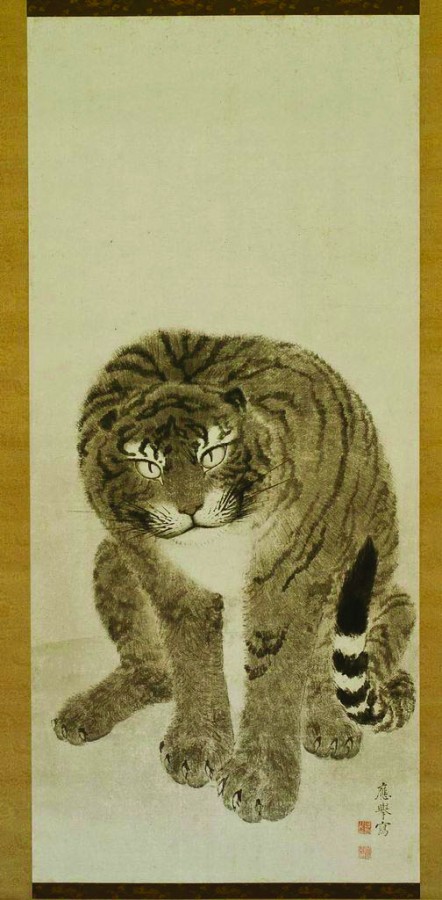
“This exhibition offers a rare glimpse of an extraordinary collection,” said Jay Xu, director of the Asian Art Museum at the press preview which I attended. “We aim to present it in a fresh and original way that explores traditional Japanese principles governing the relationship of art to our surroundings and social relationships.”
I met Dr. Laura W. Allen, the curator of Japanese Art at the Asian Art Museum, at the In The Moment Symposium where she was speaking. I followed her encouragement of starting the exhibition journey from the Lee Gallery to the Hambrecht Gallery and end at the Osher Gallery, the three ground floor galleries hosting the exhibit. “As we observe the effect of changing natural light on the art-viewing and the interaction with each art object in this show we create a unique and ever changing experience between the natural world and other people – a transient experience properly savored ‘In the Moment,’” observed Dr. Allen.
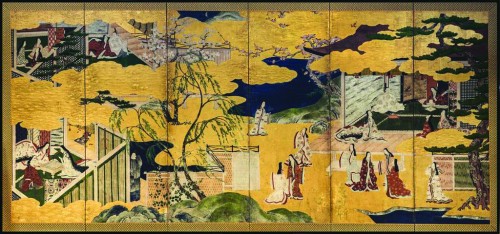
The silence descended as I entered the Lee Gallery’s dramatic surroundings. The changing lights of the gallery’s dim illumination playfully reflected in a pair of gold-leaf surfaces of the 17th century folding screens by Hasegawa Togaku. With nearly 6 feet high and 12.5 feet wide, the stunning painting of the coastal scenery made me hear the sounds of waves rolling over the rocks. Creating an atmosphere of the Japanese dwelling with the changing lights level, a few benches were positioned at the gallery for the viewers to relax and let their imagination create their own interpretation of the vision on the screens.
Following Dr. Allen’s suggested itinerary, I continued my enchanting paths to the Hambrecht Gallery, where the exhibited artwork reflects our social customs, as they relate to the rotation of arts. The selection of Ito Jakuchu’s hanging scroll painting of a mynah bird in a persimmon tree, a pair of 17th century folding screens depicting waka poems, as well as the morning glories with scattered fans delicately convey their deep meaning of life’s passage. In other artworks by the 17th century master Kano Sansetsu, the symbolic depiction of cranes, turtles, pines, bamboo, and plum are associated with a celebration of a happy marriage, marital fidelity, the birth of a child, or other important life occasions. The Hambrecht Gallery also hosts a collection of religious art created by artists specifically for the Buddhist temples and Shinto shrines and it reflects the vignettes of worship and its rituals. The most comprehensive and one of the largest paintings in this gallery showcases the death of the Buddha; it is taken out of its storage space each year and unrolled for display in honor of the historical Buddha’s death.
My final stop at the Osher Gallery culminated in my viewing of some of Ellison’s favorite paintings which depict plant life, wildlife, legendary battles, and classic romances. The extraordinary pair of folding screens depicting a dragon and tiger by one of the most remarkable artists of the Edo period, Maruyama Okyo (1733–1795) is the highlight piece for Ellison himself in his own collection.
In her appearance at the In the Moment symposium, Dr. Emily J. Sano, director emeriti of the Asian Art Museum and the curatorial consultant to Larry Ellison’s art collection, mentioned that Ellison’s works of art are changed every two to three weeks and that his estate, of as many as six guesthouses and two main houses connected by a pathway, can accommodate hanging scrolls and five large screens. “It creates a demanding schedule that requires a robust collection of paintings and this gives me an opportunity to buy more art” adds Dr. Sano with a smile.
Unlike oil paintings in the West, which may stay on the wall for years at a time, many Japanese paintings are shown only for a brief interval before being returned to storage, sometimes for as long as a few years. In addition to the prevention of damage which may be caused by prolonged exposure to the light, the primary reason Japanese art collectors, including Ellison, rotate objects in their homes is to stay attuned to the passing seasons, using flowers such as camellias in the winter and plum blossoms in the spring, followed by beautiful but short-lived cherry blossoms. Irises, which bloom in May, signal the beginning of summer. “Ellison follows this seasonal principle and when he discovered that he had no paintings with snow in them, he made a special request to seek screens and scrolls of winter scenes” said Dr. Emily Sano.
The stunning painted screens, hanging scrolls, doors, and masterworks in wood and metal, represent just a small part of the spectacular and impressive collection of over 600 art objects assembled and displayed by Ellison on his 33-acres sprawling Japanese-style residence, designed by master builder and Zen Buddhist teacher Paul Discoe of Joinery Structures Company in Oakland, CA. “To anyone visiting Larry’s estate, it becomes immediately apparent he loves cats. Signs in the driveway request the drivers to adhere to speeds no greater than 5 mph because a number of cats roam about the property,” tells Dr. Sano to the symposium’s captivated audience. “It was terrific then to find a scroll of a cat painted by the monk Bokusho Shusho in the early 16th century, which was the first painting of a cat that Larry acquired.”
“Larry Ellison traces his interest in Japanese Art to the 1970s when he fell in love with a Japanese Garden on a sightseeing trip to Kyoto” says Dr. Sano. “That moment ignited in him an admiration for the arts of Japan that led him to assemble his impressive art collection and inspired him to select a Japanese style for his estate, surrounded by the traditional Japanese seasonal gardens and a man-made lake.” It is difficult to grasp the magnitude of exquisite uniqueness of this incredible collection in one visit. Hypnotized and mesmerized by the delicate tranquility of its beauty, my continued education and the visual delight of the Japanese art of this exhibit is beyond words. I will definitely be back.
Thank you, Larry and good luck in your pursuit of the 2013 America’s Cup Trophy, which by the way, was displayed on June 27 at the Asian Art Museum at the grand opening of the In the Moment exhibit. The Asian Art Museum will serve as the only venue for this exhibition. For additional information call 451-581-3500 or visit www.asianart.org
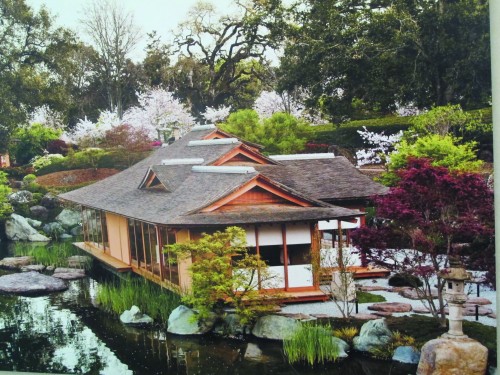
Lina Broydo immigrated from Russia, then the Soviet Union, to Israel where she was educated and got married. After working at the University in Birmingham, England she and her husband immigrated to the United States. She lives in Los Altos Hills, CA and writes about travel, art, style, entertainment, and sports. She hardly cooks or bakes, not the best of «balabostas» her beloved beautiful Mom, Dina, was hoping for. Therefore, she makes reservations and enjoys dining out.
By Lina Broydo


